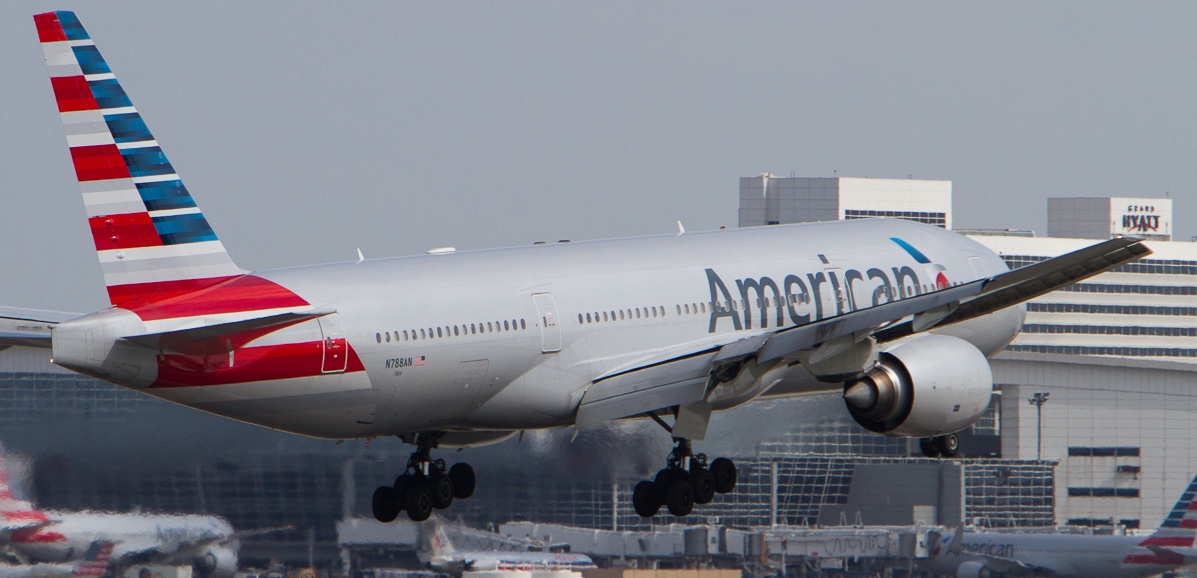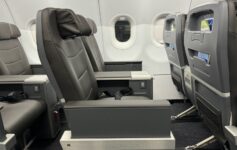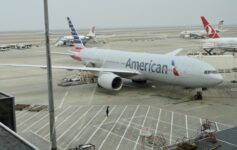U.S. airlines are retreating from Mainland China, realizing the great Chinese aviation gold mine may actually be fool’s gold.
To be sure, there is money to be made…a lot of it. But U.S. airlines are increasingly finding frustrating yields and disappointing growth in Chinese markets. As oil prices continue to rise, some routes, even flagship routes, are becoming untenable.
In the Smisek era at United Airlines, dreams of solidifying dominance in secondary Chinese markets spurred new service from San Francisco to Hangzhou, Chengdu, and Xi’an. Today, only Chengdu remains: United was simply unable to command the premium needed to sustain these direct flights.
But the Chinese problem for U.S. airlines is going beyond secondary cities.
American Airlines announced it will eliminate service to both Beijing and Shanghai from Chicago. Both flights will cease in October. Vasu Raja, vice president of network and schedule, called those routes “colossal loss leaders” for many years.
Meanwhile, Hawaiian Airlines also announced this week it is ending service to Beijing. Brian Sumers of Skift points out three reasons why this route, started in 2014, did not work for Hawaiian. First, most Chinese tourists prefer to stay within Asia when seeking out warm/beach destiations. Second, not many people speak Mandarin in Honolulu. Lastly, visas to the USA remain difficult to obtain for Chinese citizens.
I think that last point is important. One reason airlines have not seen such stunning success in the Chinese market is simply a byproduct of the difficulty of obtaining a visa to the USA.
CONCLUSION
The next question will be if Delta or United step in to take over the Beijing and Shanghai slots that American is now abandoning. While it would not surprise me, it might be wisest for all three legacies simply to let those slots sit dormant and funnel passengers onto remaining flights.
image: Grant Wickes / Wikimedia Commons





I don’t think this comes as any great surprise to anyone. First the traveling Chinese prefer their own “metal” feeling much more comfortable with the inflight crew food etc. Many years ago you had the iconic carriers today is whatever the low cost carrier du jour let alone the simply lousy service and old old metal flying by US carriers. This retreat will continue and frankly the US carriers have themselves to blame for their continued decline in market share not only in Asia but Europe.
I know you fly a lot of foreign flags but for me it’s EK to Africa and Gulf states ( business ) with AF ( don’t laugh ) and sometimes BA. AF has a great Biz product and Le Premier is superb.
The fare environment to China and SE asia is flooded with all the Chinese carriers’ dirt cheap fares. It’s hard to compete and be profitable on a 12+ hour flight when the market charges $500RT when you could collect the same fares on much shorter flights. Europe in the winter is also a bloodbath and so I suspect AA will need to find a new Asian destination to park some of these 787’s like LAX ICN/TPE.
Getting visas for to enter China is an expensive pain in the butt too. I try to avoid meetings there, favoring other countries with visa on arrival or waiver,
Ditto. I’d like to take the family to China with these comparatively inexpensive fares. However, a Chinese visa for everyone kills the deal.
The reality of the situation is that many asians that are in the US (including myself) tend to avoid US based airlines unless i’m looking at a $100 difference in price. The horrors of domestic US travel casts a huge stigma to their international ops.
As for the comments on Hawaii, there are way better beach/sea destinations closer to China compared to Hawaii that are easier for them to get to (alot of countries still require Chinese passport holders to obtain visas). Also for the majority of mainland Chinese tourists, they’re not too interested in beaches and nature tours, it’s more of shopping, food and experiences. Alot of mainland Chinese don’t know how to swim.
@ghostrider5408 there’s nothing to laugh at about Air France. It’s an excellent airline outside of their strikes. Sure, their lounges aren’t the flashiest, but I’ve had lots (lots) of great long-haul flights with them.
And I’d argue the lounges are actually quite nice. I’ll post a lounge review of the Air France 2E lounge on Monday which I found great. Appreciated the complimentary facial as well.
Which lounge in 2E; concourse L (newly renovated) or the concourse M one?
Matthew, how much of this do you feel might be a reaction to a combination of the pressure China placed on the US carriers over Taiwan, coupled with the trade fight, i.e. the likelihood that at some point one side or another will pull the trigger on retaliating with a reduction of approved flights between China and the US. The US carriers might be seeing the writing on the wall.
You could also argue that US business is ramping down China travel due to the trade fight.
@ Levi Flight is correct about the visa process.
Further: it’s amazing to me that given the size of AA’s network there is not enough O&D + connecting traffic to support their schedule in PVG and PEK. If things have slowed down that much, it is indeed telling.
Mike they fill up the planes but the yields are trash. It’s really easy to fill up a plane from ORD-PEK with $600 round trip but you will lose a lot of money. I’m sure Delta could fly JFK-PEK and lose $10,000,000 a year all while filling up the plane.
The visa issue is indeed a major one. BA has highlighted this many times. The LH & AF/KL groups serve many points in China compared to BA. Chinese tourists get schengen visa that let them visit many european countries on one trip.
But as Neh has said, yields are very low meaning you many indeed fill the back of the bus with pax paying rock bottom prices leading to losses.
How long till the US Big3 start raising their voices about heavily subsidised chinese carriers competing ‘unfairly’?
US passport holders get 10-year multiple entry visas that only require fairly rudimentary documentation. While USD 140 isn’t cheap, China has to be one of the easier pre-arrival visas for US Citizens to arrange. Combined with USD 600 airfare, I’m not sure how the visa requirement really keeps Americans from visiting China.
Of course the procedure for Chinese citizens isn’t so simple…
Couldn’t it just be because the big 3 American carriers offer an inferior product compared to most Asian carriers?
Its a combination of a comparatively poor product, tied in with an American approach to service that appears to be doing them in.
Of course, making people jump through hoops to get a visa doesnt make you a welcoming space for tourists.